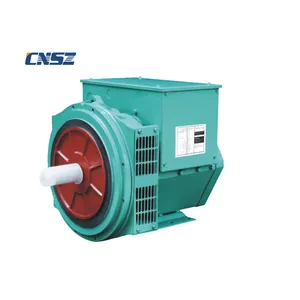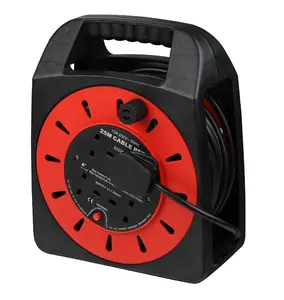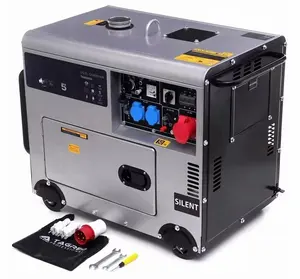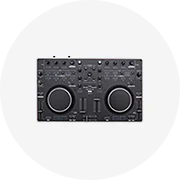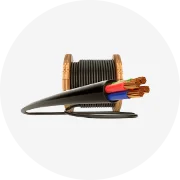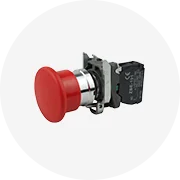Populer di industri Anda






Kotak sambungan elektronik kotak sambungan plastik antiair proyek PC Ip68 ABS luar ruangan kustom OEM
Rp 42.515 - Rp 298.923
Minimal Pesanan: 1 Buah







Baja tahan karat casing pengendali genggam kotak distribusi terpisah tingkat perlindungan IP68 Aluminum
Rp 4.963 - Rp 21.506
Minimal Pesanan: 5 Buah
Pengiriman per potong: Rp 683.040

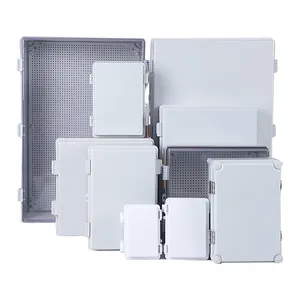





Kotak proyek kedap air pelat dudukan pintu berengsel tutup bening transparan casing sambungan plastik listrik luar ruangan Ip67
Siap Kirim
Rp 165.425 - Rp 1.511.654
Minimal Pesanan: 1 Buah
Pengiriman per potong: Rp 1.476.749







Disesuaikan Ip65 Tahan Air Luar Ruangan Plastik Pcb Kandang Kotak Persimpangan Plastik untuk Perangkat Elektronik
Rp 4.963 - Rp 21.506
Minimal Pesanan: 1 Buah







Kotak papan distribusi daya listrik, IP67 plastik portabel tahan air
Rp 4.135.625 - Rp 5.128.175
Minimal Pesanan: 5 Buah







IP65 Plastik Enclosure ABS Kotak Tahan Air Listrik Luar Kotak Persimpangan dengan Karet Cctv Kotak Persimpangan
Rp 1.655 - Rp 82.713
Minimal Pesanan: 5 Buah






CE Seri PN IP65 listrik tahan air 4/6/9/12/18/24/36 Cara DC tipe MCB kotak distribusi daya kotak persimpangan
Siap Kirim
Rp 44.831 - Rp 307.195
Minimal Pesanan: 20 Buah
Pengiriman per potong: Rp 68.321






SZOMK Grosir OEM ODM Disesuaikan ABS Luar IP65 Kotak Distribusi Tahan Air Penutup Berengsel Kotak Sambungan Penutup
Rp 40.695 - Rp 1.501.563
Minimal Pesanan: 2 Buah






EB4 Kotak Sambungan IP65 IP66 Kotak Sambungan Listrik Tahan Air Plastik 3 Arah dengan Blok Terminal
Rp 16.543 - Rp 33.085
Minimal Pesanan: 50 Buah






FATO Kotak Sambungan Plastik ABS IP65 dengan Sumbat Karet Kotak Terminal Penutup Tahan Air Kotak Distribusi Luar Ruangan
Rp 4.467 - Rp 123.077
Minimal Pesanan: 10 Buah






Kotak Panel Elektrik Logam Ip65 Tahan Air Keras Kotak Distribusi Penutup Kabinet Panel Listrik
Rp 130.686 - Rp 137.303
Minimal Pesanan: 5 Buah






Kotak Panel listrik listrik logam Ip65 tahan air keras kotak distribusi pagar kabinet listrik
Rp 33.085 - Rp 1.240.688
Minimal Pesanan: 1 Buah
Pengiriman per potong: Rp 4.962.750
Pencarian Terkait:
kotak distribusi tahan air matahasip65 kotak distribusi logam tahan airkotak distribusi luar ruang listrikkotak distribusi listrik uvkotak distribusi 12v luarkotak distribusi luar yang dipasang tiangkotak distribusi daya luar ruangankotak distribusi listrik luar ruangankotak distribusi air yang tahan airkotak distribusi tegangan rendah luardistribusi persegi panjangkotak kabel distribusi tahan airdistribusi plastikkotak distribusi 4 tiangdistribusi lampu






HT 2/5/8/12/15/18/24WAY Luar Ruangan Tahan Air IP65 PC Plastik Kotak Sambungan Listrik MCB Switch Panel Dipasang Kotak Distribusi
Rp 16.543 - Rp 165.425
Minimal Pesanan: 5 Buah






IP65 HT-8ways 8 Cara HT Kotak Distribusi Listrik Plastik Tahan Air untuk Catu Daya 63a Mcb
Rp 64.351 - Rp 68.817
Minimal Pesanan: 1 Buah




MANHUA kotak polikarbonat tahan air 400*300*170mm IP65 ABS kotak sambungan dengan kotak distribusi pelat logam pintu ganda
Rp 595.530 - Rp 661.700
Minimal Pesanan: 5 Buah






Kotak Distribusi Penutup Kontrol Luar Ruangan Aluminium CHANGHE IP65 untuk Elektronik
Rp 16.543 - Rp 496.275
Minimal Pesanan: 1 Buah






ZCEBOX Kotak Distribusi MCB, Kotak PC Daya 3 Fase TSM Elektrik Tahan Air 18 Jalan IP66 4 6 9 12
Rp 106.700 - Rp 125.558
Minimal Pesanan: 10 Buah
Pengiriman per potong: Rp 411.412






IP65 HT 2Way 3way 5way 8way DC PV surya MCB Panel tahan air kotak distribusi daya plastik dengan papan sirkuit luar ruangan
Rp 10.753 - Rp 11.580
Minimal Pesanan: 100 Buah





6 Cara Output 16A 3P IP65 Kotak Distro Distribusi Daya Tahan Air untuk Peralatan Panggung Distribusi Daya
Siap Kirim
Rp 1.803.133 - Rp 2.117.440
Minimal Pesanan: 2 Unit
Pengiriman per potong: Rp 760.625






Kotak Sambungan Listrik Tahan Air Plastik ABS IP65 Dalam Ruangan Luar Ruangan 85X85X50
Rp 13.234 - Rp 14.889
Minimal Pesanan: 100 Buah
Pengiriman per potong: Rp 29.777






Kotak Sambungan Plastik Tahan Air Ip67 Abs Pc Berengsel Daya Listrik Tahan Air Luar Kotak Distribusi Kotak Plastik
Rp 1.655 - Rp 82.713
Minimal Pesanan: 100 Buah

CNXY Penutup PC IP65 Kotak Distribusi Tahan Air untuk Pemutus Arus
Rp 41.357 - Rp 231.595
Minimal Pesanan: 1 Buah





Kotak Sambungan Tahan Air Plastik IP65 dengan Pemasangan Telinga Kotak Abs Plastik Elektronik Kandang Kotak Luar Ruangan Plastik Ip65
Rp 16.543 - Rp 33.085
Minimal Pesanan: 1 Buah






Kotak Distribusi Sakelar Listrik Pvc 200*200*150Mm Tahan Air IP66
Rp 6.617 - Rp 827.125
Minimal Pesanan: 100 Buah






Peralatan Listrik IP65 12 Cara DB Kotak Distribusi Daya Tahan Air untuk MCB
Rp 74.442 - Rp 77.750
Minimal Pesanan: 5 Buah




Jesiro HA seri 4-36 cara Ip65 peralatan listrik plastik kotak pemutus sirkuit tahan air mccb kotak distribusi untuk mcb
Rp 8.272 - Rp 211.744
Minimal Pesanan: 5 Buah






IP68 kotak luar ruangan tahan air pabrik kotak distribusi baja antikarat kotak distribusi kontrol kabinet kotak distribusi
Rp 827.125
Minimal Pesanan: 1 Set





Kotak sambungan baja serat optik kustom IP66 kotak distribusi daya listrik logam besar tahan air
Rp 124.069 - Rp 264.680
Minimal Pesanan: 5 Buah






Kotak sambungan elektronik luar ruangan bahan ABS pemasangan dinding OEM / ODM kotak kandang tahan air plastik peringkat IP65
Rp 28.123 - Rp 57.899
Minimal Pesanan: 10 Buah
Pengiriman per potong: Rp 133.498






Teknik ABS MCB Sekring Peralatan Listrik Industri unit konsumen kotak distribusi plastik daya 3 fase ip65
Rp 9.926 - Rp 41.357
Minimal Pesanan: 20 Buah



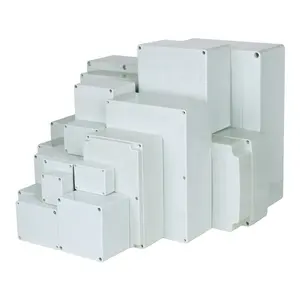





Pabrik Grosir Kustom Pvc Abs IP65 Plastik Tahan Ledakan Tahan Air Kotak Sambungan Penutup Listrik
Siap Kirim
Rp 33.085 - Rp 595.530
Minimal Pesanan: 5 Buah
Pengiriman per potong: Rp 719.599




HA-4WAY IP65 IP66 Kotak Distribusi Unit Konsumen Luar Ruangan ABS Tahan Air
Rp 64.185 - Rp 66.998
Minimal Pesanan: 1 Buah






Panel Listrik Tahan Air Distribusi Pvc Plastik Mesin Surya Kamera Ip65 Membuat Kabel Cctv Pv Cast Aluminium Kotak Persimpangan
Rp 165.425 - Rp 827.125
Minimal Pesanan: 2 Buah






TXM kotak distribusi model permukaan plastik elektrik Panel tahan air luar ruangan seri IP40 2/4/6/8/10/12/15/18/24/36 cara
Rp 8.768 - Rp 144.086
Minimal Pesanan: 5 Buah
Pengiriman per potong: Rp 579.319




Kotak Listrik Tahan Air Gaya Korea (PC/ABS) Papan Distribusi IP65 Kotak Sambungan Penutup Transparan
Rp 49.628
Minimal Pesanan: 1000 Buah




Distribusi cabang kabel koneksi listrik 85x50 85x85x50 100x100x70mm IP55 IP65 tahan air kotak sambungan plastik ABS
Rp 4.136 - Rp 95.947
Minimal Pesanan: 500 Buah






HA 8way Ip65 Kotak Distribusi Tahan Air, Kotak Pencahayaan Penutup Badan dan PC ABS
Rp 165.425
Minimal Pesanan: 1 Buah






HA-18 Kotak Panel Tahan Air, 18 Cara 410*285*100Mm PC Plastik Penutup Tahan Api dengan CE
Siap Kirim
Rp 142.266 - Rp 158.808
Minimal Pesanan: 5 Buah
Pengiriman per potong: Rp 194.044





Kategori terbaik
Tentang ip65 kotak distribusi tahan air
Alibaba.com menghadirkan sejumlah produk berkualitas tinggi, efisien, dan tahan lama. ip65 kotak distribusi tahan air untuk berbagai jenis penggunaan elektronik dan tujuan distribusi daya. Standar optimal ini. ip65 kotak distribusi tahan air berkualitas baik dan dapat dibeli dengan harga paling terjangkau dari pemasok terkemuka dan grosir di situs. Produk ini tidak hanya digunakan untuk berbagai keperluan industri, pembangkit listrik tetapi juga menawarkan fungsionalitas dalam pengaturan perumahan. Ini. ip65 kotak distribusi tahan air menawarkan ketahanan dan efisiensi dalam melakukan pengoperasian kelistrikan.
Variasi yang berbeda dari. ip65 kotak distribusi tahan air yang tersedia di situs terbuat dari bahan yang kokoh dan berkualitas tinggi seperti plastik ABS, FRP, logam, beton yang menjamin keberlanjutan selama bertahun-tahun. Itu. ip65 kotak distribusi tahan air yang ditawarkan di situs ideal untuk penggunaan di dalam dan luar ruangan dengan IP30, derajat perlindungan IP60. Luar biasa. ip65 kotak distribusi tahan air tersedia di sini disertifikasi, diuji, dan diverifikasi untuk penggunaan distribusi tenaga berat seperti di pembangkit listrik.
Alibaba.com menawarkan banyak variasi. ip65 kotak distribusi tahan air berdasarkan persyaratan dan pilihan model. Ini. ip65 kotak distribusi tahan air berkisar dari kotak DB gardu induk kompak, menara transmisi, rel kabel listrik hingga kapasitor, kotak distribusi MCB, lampu panggung tahan air, dan banyak lagi. Itu. ip65 kotak distribusi tahan air yang ditawarkan di situs ini tahan air, tahan guncangan, tahan bocor, anti karat, anti korosi, dan hemat energi untuk bekerja secara optimal.
Jelajahi berbagai macam. ip65 kotak distribusi tahan air menawarkan di Alibaba.com untuk membeli produk ini sesuai anggaran Anda dan menghemat uang. Produk ini bersertifikasi ISO, CE, ROHS, dan tersedia dengan opsi yang dapat disesuaikan. Anda juga dapat pergi untuk instalasi di tempat dan layanan purna jual oleh para insinyur ahli.
Variasi yang berbeda dari. ip65 kotak distribusi tahan air yang tersedia di situs terbuat dari bahan yang kokoh dan berkualitas tinggi seperti plastik ABS, FRP, logam, beton yang menjamin keberlanjutan selama bertahun-tahun. Itu. ip65 kotak distribusi tahan air yang ditawarkan di situs ideal untuk penggunaan di dalam dan luar ruangan dengan IP30, derajat perlindungan IP60. Luar biasa. ip65 kotak distribusi tahan air tersedia di sini disertifikasi, diuji, dan diverifikasi untuk penggunaan distribusi tenaga berat seperti di pembangkit listrik.
Alibaba.com menawarkan banyak variasi. ip65 kotak distribusi tahan air berdasarkan persyaratan dan pilihan model. Ini. ip65 kotak distribusi tahan air berkisar dari kotak DB gardu induk kompak, menara transmisi, rel kabel listrik hingga kapasitor, kotak distribusi MCB, lampu panggung tahan air, dan banyak lagi. Itu. ip65 kotak distribusi tahan air yang ditawarkan di situs ini tahan air, tahan guncangan, tahan bocor, anti karat, anti korosi, dan hemat energi untuk bekerja secara optimal.
Jelajahi berbagai macam. ip65 kotak distribusi tahan air menawarkan di Alibaba.com untuk membeli produk ini sesuai anggaran Anda dan menghemat uang. Produk ini bersertifikasi ISO, CE, ROHS, dan tersedia dengan opsi yang dapat disesuaikan. Anda juga dapat pergi untuk instalasi di tempat dan layanan purna jual oleh para insinyur ahli.
